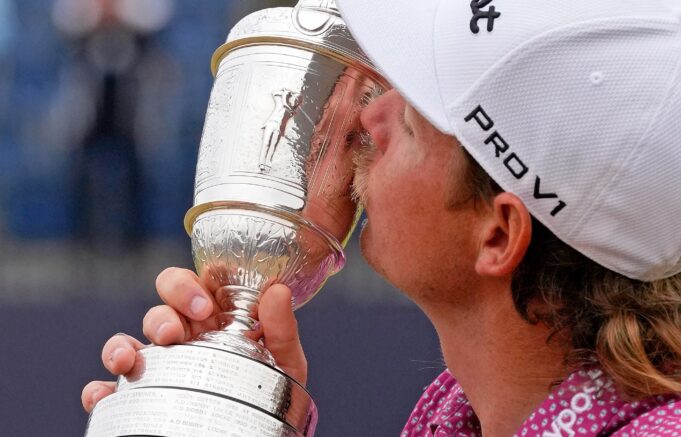The British Open, full of legacy and tradition, stands tall as golf’s grandest stage. At the heart of that stage lies one of golf’s most iconic prize, the Claret Jug. For the casual fan, it’s a cool-looking piece of metal. For those who know, it means much more.
The Claret Jug: More Than Just a Trophy

The Claret Jug is officially known as The Golf Champion Trophy. But let’s be honest—that name doesn’t exactly soar. “Claret Jug” reflects the jug’s resemblance to the 19th-century vessels used to serve Bordeaux wine.
But don’t be fooled by the nickname. This isn’t your grandma’s antique pitcher. This is golf’s holy grail, born in the wake of a legend.
A New Trophy Born of Dominance
Back in 1860, when the Open Championship first teed off, there wasn’t a trophy—there was a belt. Yep, a Challenge Belt made of Moroccan leather and silver. And if you won it three straight times? It was yours.
Enter Young Tom Morris, who did exactly that by 1870. And with no more belt to give, the 1871 Open was canceled. No winner. No prize.
So in 1872, organizers from Prestwick, The Royal and Ancient, and The Honourable Company of Edinburgh Golfers joined forces—and wallets—to fund a new reward: the Claret Jug. It wasn’t quite ready in time for Morris to hoist it again, but by 1873, Tom Kidd became the first man to officially receive it.
Tradition, Craftsmanship, and Legacy

Crafted by Mackay Cunningham & Company, a firm of Scottish silversmiths, the original Jug weighed in at 5.5 pounds of 92.5% sterling silver. That same trophy now lives at the R&A Clubhouse in St. Andrews, right next to the retired Challenge Belt.
And for those wondering what it’s worth today? Let’s just say six figures will only get you partway there.
Gary Player’s 1974 Jug sold for $481,068 just last year, and John Daly’s 1995 trophy sold for over $392,000. These aren’t just trophies—they’re priceless heirlooms of athletic greatness.
Replicas and Rituals
Each year, a full-sized replica is handed to the British Open champion. That’s the one you see in photos, pressers, and parades. But no, they don’t get to keep the “real” one. Instead, they’re gifted their own full-sized replica, and allowed to commission up to three smaller versions.
Of course, mix-ups happen. In 1982, Tom Watson accidentally used the original as a prop during practice swings in his home office. After realizing what he’d done, he repaired it himself like a true champion.
The Jug’s Final Resting Place
After the winner’s name is engraved, the original Claret Jug is returned to its home in St. Andrews, back to its place in the game’s most sacred hall. Waiting for the next great name. The next moment. The next chapter.
This isn’t just about silver and shine. The Claret Jug is a symbol. It waits on the other side of 72 brutal holes (hosted at Royal Portrush this year) of wild weather, ancient bunkers, and undying pressure.





